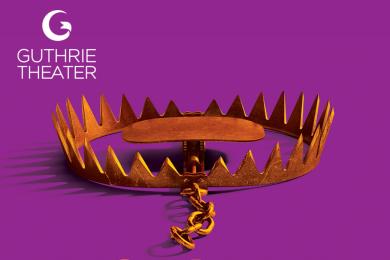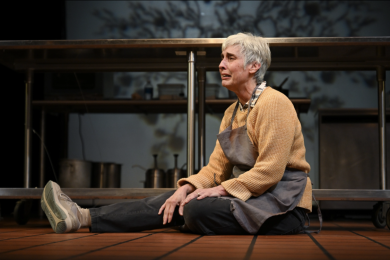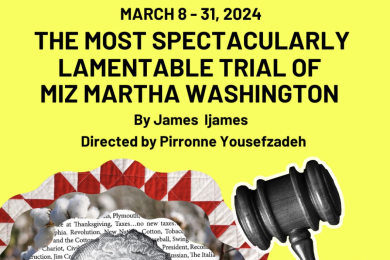Rhinoceros: A metaphor
To say Eugene Ionesco is complex is an understatement. I often feel that I am simultaneously connected and engaged yet also suffering from mild to moderate confusion, when seeing or reading his work. As a name that often represents the Theatre of the Absurd, scholars have commented that this label is too “narrow” a category to qualify the work of this proficient, and highly satirical playwright. One thing agreed upon is that Ionesco wrote social commentary.
Based on his personal experiences growing up in early 20th century France, (ripe with socio-political upheaval) he had ample fodder and freedom for critical exploration. He describes his play, Rhinoceros, as a response to fascism and its contribution to the growth of the Nazi party, and yet claims it is not portraying “the political right or left; it cannot be contained within geopolitical borders” nor was it “characteristic of a social class”. He explored “themes of conformity, culture, fascism, responsibility, logic, mass movements, mob mentality, philosophy and morality.” You know, all that light and breezy stuff.
Today, and specifically within our challenging cultural climate, it makes sense that Theatre in the Round Players, (now in their 66th season), have chosen to produce this play, as it is as relevant and applicable now as it was when it premiered in 1960.
Director George M. Roesler writes in his notes that the play is “very much a burlesque; funny and poignant at the same time.” I agree that there is a lot of potential for this as is common with satire, however, right away, Scene One was difficult to understand. The story’s foundation is laid and we are introduced to the characters and at the top, the very large cast is all on stage together. I wasn’t sure (aside from assuming it was those who were talking) where I was supposed to focus, and even those conversation were often overwhelmed by the odd action and sounds around them.
Ionesco explores the notion of expressions and cliché, and the characters debate irrelevant facts on Rhinoceros “type”, instead of addressing the obvious terror and bizarre behavior of stampeding Rhinos overwhelming their small French town. This is all established in Scene One, but because of volume and odd blocking I missed a lot of this information. Intentionally Ionesco alludes to “Asiatic mongrels” when referring to the different rhino breeds, a direct reference to the “Asiatic Jews,” a racial slur coined during the rise of the Nazi regime. These key elements are important, and it was only when I researched after the fact that it made much more contextual sense.
The technical volume and clarity of the sound was another big issue, (I noted that I was sitting underneath a speaker which might have altered my personal experience). The noise of the stampede (which was more reminiscent of galloping horses rather than the heft and aggression of charging rhinos), overpowered the actors on stage. At first, I thought it was intentional, except only when I realized the missed information I was meant to hear did I realize it might have been technical error.
TRP is a wonderful space, yet there is difficulty in staging shows in the round, and I found that during this first scene especially, the JOHN (Clint Allen) and BERENGER (Lucas Gerstner) conversations were upstaged by the weird demonstrative behavior of the ensemble and loud sound. I will say the LOGICIAN (Charles Numrich) and GENTLEMAN (Phil Holt) were simple and hilarious and the conclusion of a “dog” actually being a “cat” because they both “have four legs” is as unavoidably funny as the asinine statements coming from the mouths of politicians today. I had to laugh out loud.
Scene Two was much clearer. The conversation in the office debating the actual presence of rhinos could just as well been people in government discussing the reality of climate change. The office uniform of white, red and black, the effective verbal repetition, and physical punctuation of paper stamping, created a truly whimsical atmosphere (more of what I was expected based on the notes of Mr. Roesler). Highlights are the character work of Erin Granger and Laura Hoover as MS. PAPILLON and BOTARD respectively.
Act Two continues with loud industrial sounds, odd animal noises and present-day music, a choice that left me puzzled. JON and BERENGER are back and we are witness to a live rhino transformation. Credit to costume designer, Bobbi Iverson-Roesler, and mask designer, Kimberly L. Lawler, for this. The rhino skin and headpieces are a wonderful combination of absurd with clever and eerily realistic elements. The most realistic of the four scenes, the two actors handled the language well and it was exciting to anticipate JOHN’s inevitable transformation. The scene is a first-hand account of Ionesco’s experience with human rights sympathizers change of heart to then becoming Nazi’s within a matter of weeks. Mob mentality and blindly following leaders, this carries into the final scene when it appears no humans are left except BERENGER, DUDARD (Austan Peterschick) and DAISY (Jane Catherine Sterk). Aside from the intriguing foreshadowing of DUDARD eating BERENGER’s window plant, this scene is a lot of pacing, whining, and despite BERENGER’s proclamation of the opposite, “capitulating.” He and DAISY have an entire romance on stage (which in my opinion goes on too long and has very little chemistry) and when she leaves and BERENGER is alone and delivering his final soliloquy, the rest of the cast (now in rhino masks) come sit among the audience. The lights come up to hold up the proverbial mirror, and again I’m unclear why? It was little more than beating a dead “rhino” at that point, so to speak.
Ionesco is complex, and this production had some moments of comedy, irony and lucidity, but ultimately was confusing. The tertiary characters; wandering around the stage, watching the acting, pretending to be in conversation with other characters, sometimes acknowledging the audience or engaging with a fake cat, using their cell phones to video JOHN and BERENGER’s debate, was strange behavior with no clear intention. There’s a big difference in wondering why the characters are doing something versus why the actors are doing something, and it took me out of the world of the play. Often, I felt I was toeing the line between trying to buy into realism OR wanting to commit to the “absurd,” it was difficult to identify the important ideas.
JOHN and DUDARD both mock BERENGER for weakness because he drinks too much and believes in love which they view as signs of lack of self-control. Ionesco says BERENGER has the strength of the modern anti-hero. "Stemmed from what may be taken for weakness,” in the end BERENGER is the only one who has the strength to hold out and maintain his individuality. And though there were moments of solid character work, unique visuals and funny text, I don’t think it was realized in a way that I truly grasped the director’s, or the playwright’s, point of view.
As always, I encourage you to go, make your own judgment and experience it for yourself. I have limited experience with Ionesco and the plays of his that I’ve worked on have all been bizarre, very funny and definitely worth your time. His intelligence, skilled storytelling and satirical wit is why he is known as the “Shakespeare of the Absurd.” He is a name you should know. You have one more weekend to catch Rhinoceros at TRP.




